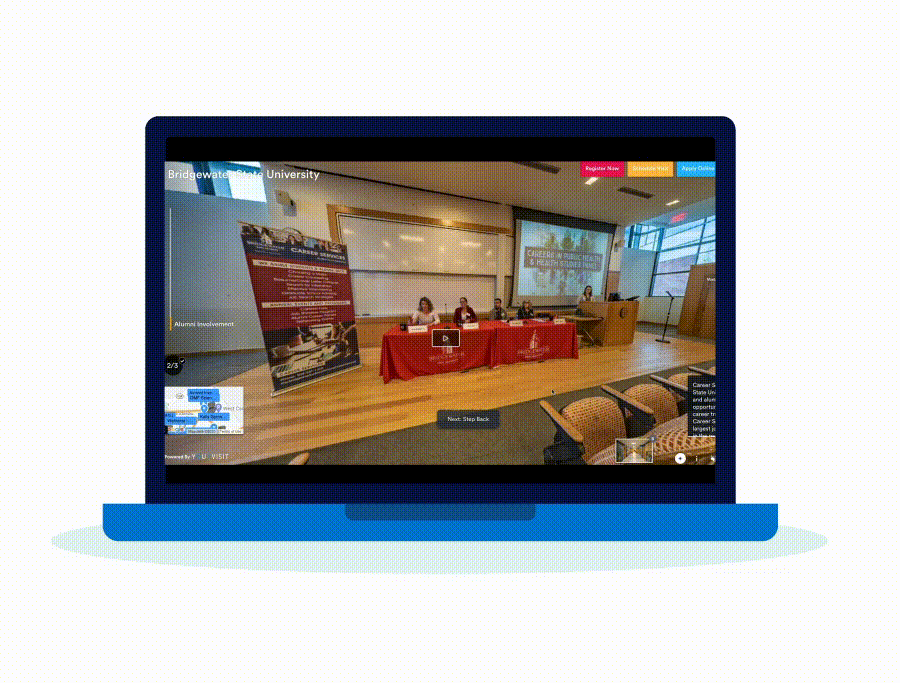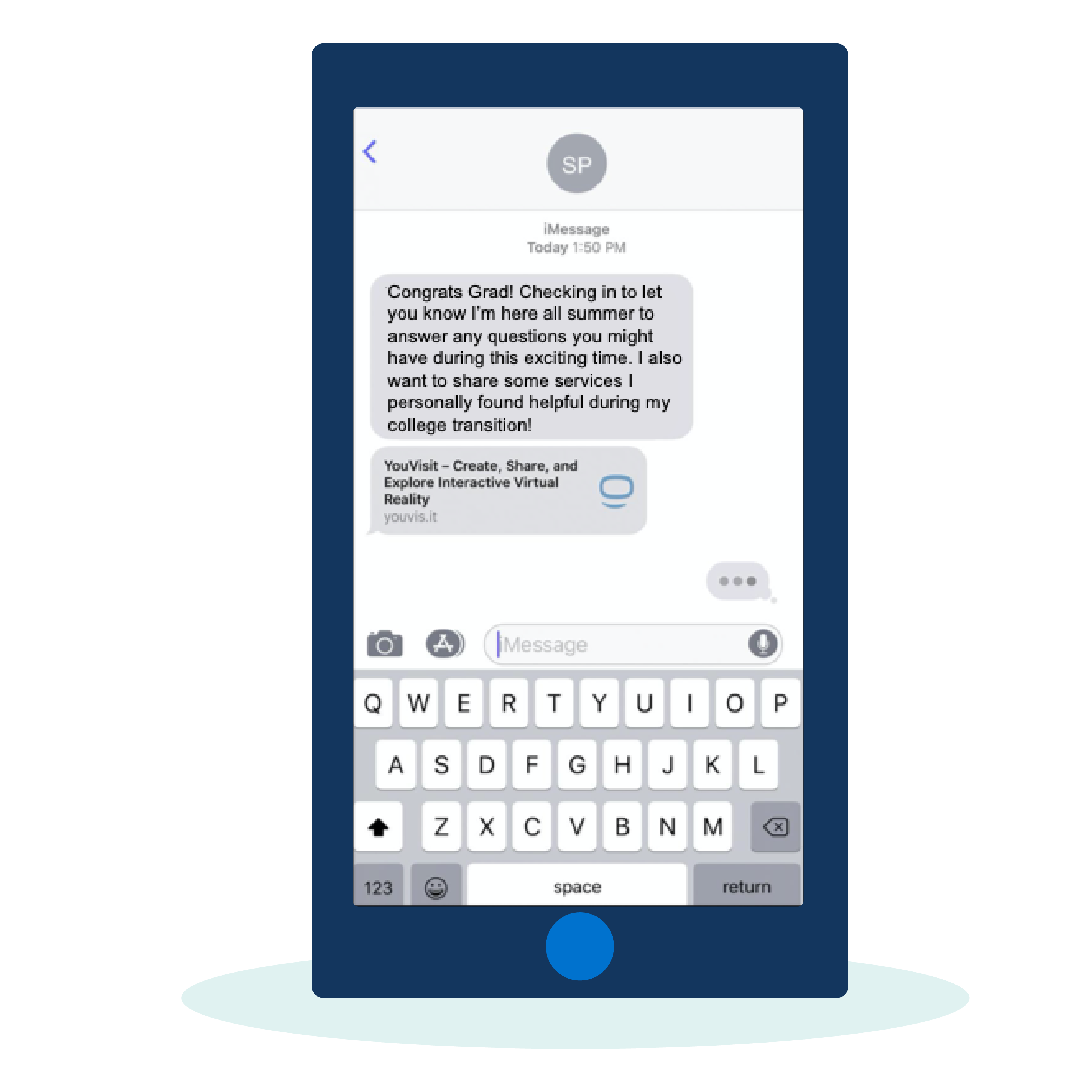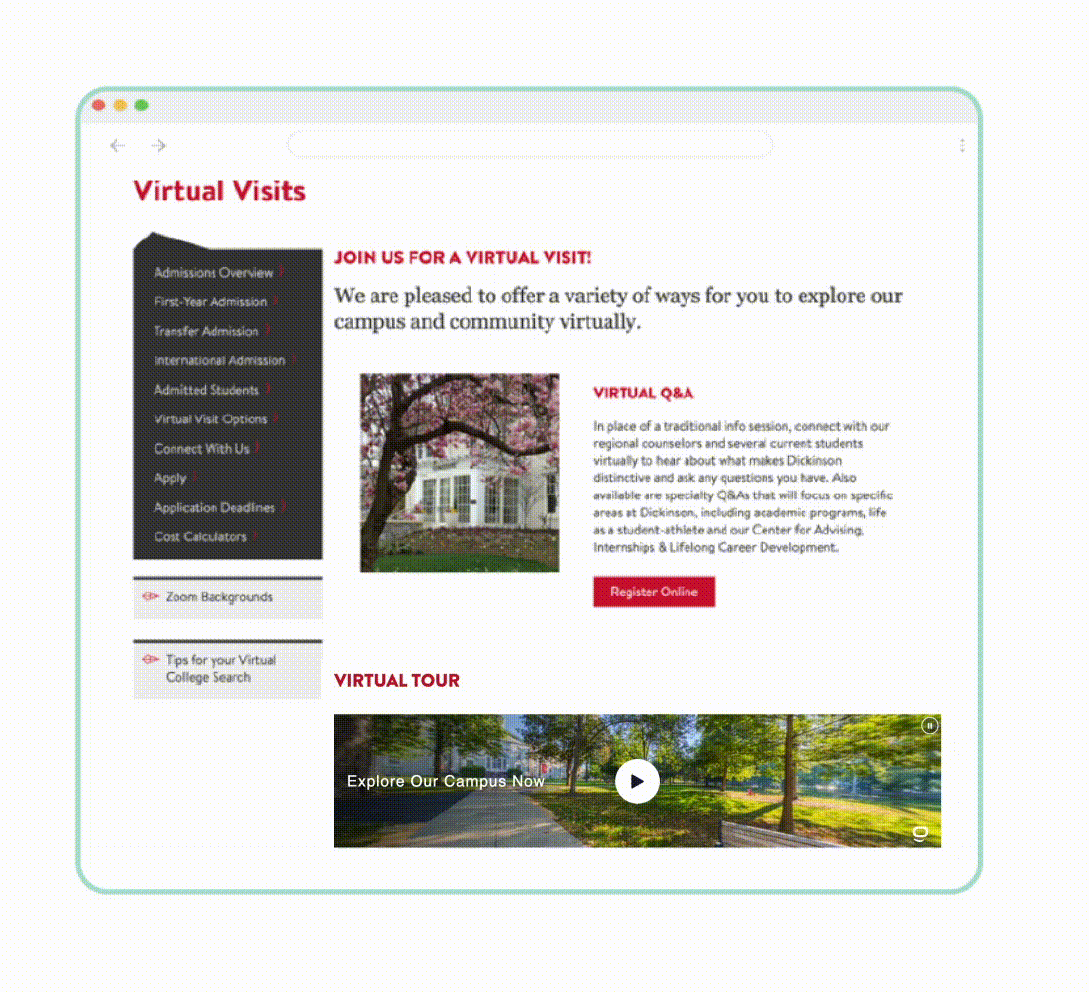Summer Melt Playbook: How to Leverage Your Virtual Tour to Yield More Students
Don’t have a virtual tour?
Every summer, enrollment leaders look for ways to make their class stick. This summer’s efforts may prove to be particularly challenging given the lasting effects of COVID-19 and the uncertainty that many students and their families are feeling right now.
The good news is that many schools already have a tool that can be leveraged in omni-channel communications to support their yield effort; of course, we are talking about a virtual tour! If you have a virtual tour, it can be used to reassure prospective students and their families, remind them of why they chose your school in the first place, and ultimately ensure that they “show up” (in person or virtually) in the fall.
Below you will find ways to leverage your virtual tour to support key tactics and combat summer melt. Many of our more than 600 higher education partners have already successfully implemented these strategies to keep students excited and engaged until welcome week.
Tip
Always include communications to the parents/guardians of your prospective students.Tip
Pay special attention to students most likely to experience high rates of melt such as first-generation, low-income, and students who have not submitted the FASFA.** A recent EAB analysis found that FAFSA filings are currently down 3% compared to 2019. The decline for Black and Latinx students is double that of nonminority students.
Key Tactics:
- Paint the Long-Term Picture
- Highlight Return on Education
- Show Support
- Make Sure Students “Visit”
- Lighten the Mood

1. Paint the Long-Term Picture
Prospective students are struggling to imagine what their first semester will look like. While campus life will certainly be different this year, you can help students see past any short-term disruptions and keep them excited about what your campus has to offer.
Suggested Strategy
Send students an email or text message letting them know that you’re thinking of them and looking forward to brighter days. Ensure that near or far, things such as your school spirit, academic offerings, and community impact will remain strong.
How to leverage your virtual tour to support this messaging:
- Link to a scene that highlights your school pride—like this scene from Idaho State University
- Link to a scene that allows students to step into a lab and gets them excited about your cutting-edge innovation—like this scene from Case Western
- Link to a scene that highlights your commitment to serving the community—like this scene from UPenn

Tip
For cohorts most likely to experience high rates of melt, highlight your unwavering commitment to diversity and inclusion through an academically and culturally supportive environment that fits all learners.
2. Highlight Return on Education
In addition to worrying about campus life, students are also concerned about their post-graduation experience. Students want to know that there will be a return on their higher education investment. Reassure that whether on campus or not, as members of your student body, your students are set up for success come time for graduation. Highlight the fact that they will become part of a lifelong peer network just by virtue of enrolling at your institution.
Suggested Strategy
Highlight your career outcomes and leverage your alumni network to share success stories about how they overcame challenges, such as the recession of 2008, and where they are today.
How to leverage your virtual tour to support this messaging:
- Link to a scene that highlights your career services—like this scene from Manhattan Community College
- Link to a scene that highlights your workforce connections and alumni outcomes—like this scene from Bridgewater State
- Link to a scene that reinforces post-graduation opportunities that are unique to your institution—like this scene from Northeastern

Tip
For cohorts most likely to experience high rates of melt, mitigate concern for students who may not understand their career options. Communicate that they do not have to jump right into a set major or career path and that you offer career development and work study opportunities.
3. Show Support
Students have been attending school online since March and have not had in-person support from faculty for longer than anticipated. With a gap in face-to-face support from teachers and counselors, it’s time to double down on communication and show how you are here to support in a variety of ways.
Suggested Strategy
Have faculty and/or current students send personalized outreach to check in and reiterate that we’re all in this together. Include personal stories along with the support resources available at your institution to help students navigate these difficult times. Set up an ongoing cadence of messages like these to reinforce that you are here for a smooth transition.
How to leverage your virtual tour to support this messaging:
- Link to a scene that showcases your support centers—like this scene from Saint Leo that highlights tutoring resources or this scene from Governors State that highlights mental health resources
- Link to a scene that speaks specifically to the freshman transition experience at your school—like this scene from Emory

Tip
For cohorts most likely to experience high rates of melt, ease concern regarding access to academic support and resources by highlighting that whether in person or virtually, you have dedicated resources to help make the transition from high school to college. In particular, emphasize your ability to provide support around Financial aid (e.g., submitting the FAFSA, completing the verification process, presenting a financial aid appeal, etc.) and Academics (e.g., accessing tutoring services, utilizing office hours, etc.).
4. Make Sure Students “Visit”
This might sound obvious, but make sure prospective students take a tour, even if it’s a virtual tour. Nothing can replace the feeling a student gets when they step foot on campus and “just knows”that your institution is right for them, but we can do our best. Try to spark that “fall in love moment.”
Suggested Strategy
Ensure that your admitted-student pages offer multiple visit options such as virtual visits or drive through campus visits.
How to leverage your virtual tour to support this messaging:
- Send an email to both a student and their parent/guardian that includes a link to your virtual tour, encouraging them to set aside time to tour your school together
- Host a virtual visit in which someone guides visitors through your virtual tour
- Embed your virtual tour on your home page and admitted-students pages

Tip
If exploring virtually, ensure families know that the tour can be explored in multiple languages.Tip
Offer an after-hours visit option (virtual or in-person) for working parents.Tip
Highlight community assets that may be helpful to low-income students (e.g., public transportation).
5. Lighten the Mood
Prospective students are experiencing the loss of events they’ve been anticipating for months, and institutions need to be sensitive to these losses and the different hardships everyone is experiencing. Sometimes we just need to keep it light.
Suggested Strategy
Have a student ambassador do an “unfiltered” social media takeover. Keep it authentic and fun so that a prospective student can better envision themselves as part of your community.
How to leverage your virtual tour to support this messaging:
Have a current student leverage your virtual tour for a social media takeover.
- Take a “walk” inside the student union and hear a story about an embarrassing event that happened there
- Hear about traditions that students at your school look forward to each year and incorporate relevant virtual-tour scenes—like this scene from Auburn

Tip
For cohorts most likely to experience high rates of melt, have a student ambassador share inside tips on how they got through their first year of school (e.g., how they got involved in clubs or the creative ways they navigated a tight budget).At the end of the day, people remember how you made them feel. Be honest, be authentic, and ensure that your students feel supported throughout the summer.